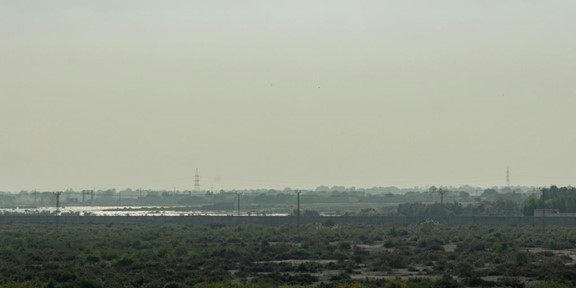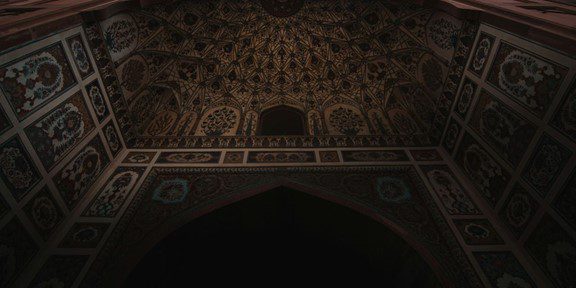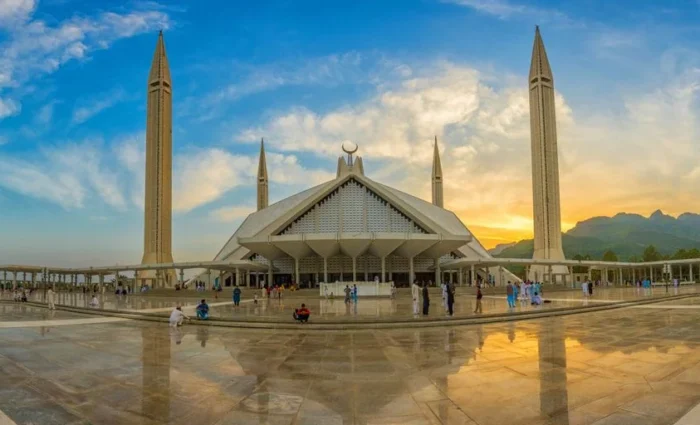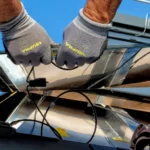Future of FRP Products in Pakistan
Alright, so let’s talk about the future of FRP products in Pakistan. You might be wondering what FRP even is—it’s Fiber Reinforced Plastic, a pretty cool material that’s used in a bunch of industries because it’s strong and doesn’t rust. In Pakistan, the FRP scene has been around since the late 80s, but it’s not as advanced as in some other places. The industry here is mostly made up of small businesses, and they haven’t really caught up with the latest tech yet. But there’s definitely potential for growth, especially if they start using more modern methods and if the government steps in to help out.
Key Takeaways
- FRP products in Pakistan have been around since the 1980s but need more tech upgrades.
- The industry is mostly small businesses lacking modern machinery and techniques.
- There’s a big opportunity for growth if local production of raw materials kicks off.
- Government support could play a huge role in boosting the FRP sector.
- Investors are needed to bring in new technology and expand the market.
Current State of FRP Products in Pakistan

The Fiber Reinforced Plastic (FRP) industry in Pakistan has been around since the late 1980s. It’s been a slow climb compared to other countries, like India, which started at the same time but has moved ahead. In Pakistan, the FRP sector is mainly made up of small businesses, often referred to as structured industrial units or small and medium enterprises (SMEs). These are located in major industrial cities like Lahore, Karachi, Rawalpindi-Islamabad, and Peshawar.
The industry still relies heavily on traditional methods, such as manual compression molding, which limits its growth potential. While some manufacturers have started using advanced techniques like filament winding and pultrusion, the lack of modern machinery is a significant barrier.
Challenges Facing the FRP Sector
The FRP industry in Pakistan faces several hurdles:
- Technology Gap: There’s a noticeable lag in adopting modern manufacturing technologies.
- Import Dependency: Most raw materials are imported, making production costly and subject to currency fluctuations.
- Fragmented Market: The industry is quite fragmented, which makes cohesive growth challenging.
Additionally, the sector struggles with financial barriers and limited research and development, which stifles innovation and competitiveness.
Key Players in the Market
In Pakistan, the FRP market is dominated by a few key players who have managed to adopt some modern techniques. However, the majority of the industry consists of smaller enterprises. These key players are instrumental in driving the market forward, yet they face stiff competition from traditional materials like steel and aluminum.
Despite these challenges, the FRP market in Pakistan holds potential for growth, especially as global demand for FRP composites continues to rise, projected to reach a market value of approximately US$ 190.9 billion. With the right investments and government support, Pakistan’s FRP sector could become a significant player on the global stage.
Technological Advancements in FRP Manufacturing
Emerging Technologies in FRP Production
In the world of fiberglass reinforced plastic (FRP), technology is moving fast. We’re talking about some pretty cool stuff like using carbon fiber and high-performance resins. These materials make FRP products stronger and more resistant to chemicals. This makes them perfect for tough environments like chemical plants and oil refineries. And let’s not forget about automation. Robots are now part of the game, handling tasks like filament winding and layup. This means production is faster, and the quality is consistent.
Impact of Technology on Product Quality
Technology is a game-changer for FRP product quality. With automated systems, manufacturers can maintain high standards consistently. The use of advanced materials not only enhances strength but also ensures durability. This means fewer defects and longer-lasting products. IoT integration is another exciting development. By embedding sensors, companies can monitor conditions like temperature and pressure in real-time. This helps in predictive maintenance and boosts safety.
Adoption of Modern Techniques in Pakistan
In Pakistan, the adoption of modern techniques in FRP manufacturing is picking up pace. Companies are increasingly investing in automation and smart technologies. The shift towards these advanced methods is driven by a need for efficiency and quality. Customization is also becoming popular, with modular designs that make installation and expansion easier. As Pakistan continues to embrace these innovations, the FRP industry is set to thrive, offering solutions that are both cost-effective and environmentally friendly.
Applications of FRP Products in Various Industries
FRP in Construction and Infrastructure
Fiber Reinforced Polymer (FRP) is making waves in the construction world. It’s not just about being lightweight—it’s about strength and resistance to environmental factors like corrosion. In construction, FRP is often used for reinforcing bridges, buildings, and other infrastructure projects. Its ability to withstand harsh weather conditions and chemical exposure makes it a top choice for long-lasting structures. Plus, its flexibility allows architects to create innovative designs without compromising on durability.
Use of FRP in Transportation
In the transportation sector, FRP is a game-changer. From automotive to railway and even aerospace, this material is valued for its lightweight and high-strength properties. Cars and buses use FRP for body panels and internal components, reducing overall weight and improving fuel efficiency. In aerospace, FRP components help in cutting down the weight of aircraft, which in turn boosts performance and fuel economy. The versatility of FRP is evident as it adapts to the unique needs of each transportation mode.
FRP Applications in the Energy Sector
The energy sector is another area where FRP shines. It’s used in wind turbine blades, where its lightweight nature and strength are essential for efficient energy generation. In oil and gas, FRP is employed for pipelines and storage tanks due to its resistance to corrosion and harsh environmental conditions. The material’s adaptability to extreme temperatures and pressures ensures it meets the rigorous demands of energy production and storage.
As industries continue to evolve, the role of FRP is set to expand, offering innovative solutions across various sectors. Its unique properties make it an ideal choice for industries looking to improve efficiency and sustainability.
Economic and Environmental Impacts of FRP Products
Economic Benefits of FRP Usage
Fiber Reinforced Plastics (FRP) are making waves in various sectors due to their economic advantages. One major benefit is the reduction in lifecycle costs, especially in construction and infrastructure. By using GFRP reinforcement, structures enjoy enhanced durability, which translates into lower maintenance and repair expenses over time. This not only saves money but also extends the lifespan of buildings and bridges.
- Cost Efficiency: FRP materials are lightweight yet strong, meaning less material is needed to achieve the same structural integrity as traditional materials.
- Reduced Labor Costs: Installation of FRP components is often quicker and requires less manpower, reducing overall project costs.
- Less Downtime: With FRP’s resistance to corrosion and wear, facilities and infrastructure can operate longer without needing repairs, minimizing downtime costs.
Environmental Considerations and Sustainability
As the world shifts towards sustainable practices, FRP products are gaining attention for their environmental benefits. They are known for their longevity and resistance to harsh environmental conditions, which reduces the need for frequent replacements and repairs.
- Lower Environmental Footprint: The production process of FRP generally emits fewer pollutants compared to traditional materials like steel or concrete.
- Energy Efficiency: Manufacturing FRP requires less energy, contributing to a smaller carbon footprint.
- Sustainability: FRP’s durability means fewer resources are consumed over time, aligning with sustainable development goals.
FRP products are paving the way for a more sustainable future by offering robust alternatives to conventional materials. Their ability to withstand environmental stressors without degrading makes them a go-to choice for eco-conscious projects.
Recycling Challenges and Opportunities
Recycling FRP poses challenges due to the composite nature of the materials. Traditional recycling methods often lead to a loss of mechanical properties, making it difficult to reuse FRP effectively. However, innovative recycling techniques are being explored to address these issues.
- Mechanical Recycling: Involves grinding FRP into smaller particles, which can then be used in new composite materials. However, this method often results in a decrease in material strength.
- Thermal Recycling: Uses heat to break down FRP components, but can be energy-intensive and costly.
- Chemical Recycling: Promises better recovery of material properties but requires further research and development to be economically viable.
Despite these challenges, advancements in recycling technologies hold promise for improving the sustainability of FRP products. Developing effective recycling methods could open new markets for recycled FRP materials, aligning with global sustainability efforts.
Future Prospects and Growth Opportunities for FRP in Pakistan

Potential for Market Expansion
Pakistan’s FRP industry is on the brink of expansion. With the increasing demand for durable and lightweight materials in various sectors, the market is poised for growth. Local production of raw materials is crucial to reduce dependency on imports and stabilize costs. Encouraging local manufacturing can also help in managing foreign exchange reserves better.
Investment Opportunities in the FRP Sector
Investment in the FRP sector can be a game-changer. The government should offer incentives to attract both local and foreign investors. Potential areas for investment include:
- Setting up local manufacturing units for raw materials.
- Developing advanced FRP technologies.
- Creating partnerships with international firms to bring in expertise and innovation.
Government Initiatives and Support
The role of the government is pivotal in shaping the future of the FRP industry. Policies that support research and development, provide tax breaks, and facilitate easy access to credit can significantly boost the sector. Government initiatives should focus on:
- Promoting industry-academia collaboration for innovative solutions.
- Offering subsidies for setting up FRP manufacturing plants.
- Encouraging public-private partnerships to enhance sector growth.
As Pakistan moves towards industrialization, the FRP sector presents a unique opportunity to contribute to Net Zero emissions goals by 2050, aligning with global sustainability efforts.
Competitive Landscape and Market Dynamics

Analysis of Market Competition
In Pakistan, the FRP industry is a bustling field with many players vying for dominance. The competition is fierce, with both local firms and international giants making their mark. Local companies often leverage their understanding of regional needs, while international firms bring advanced technology and significant investment. This mix creates a dynamic market where innovation and adaptability are key.
Strategies for Market Penetration
Companies aiming to penetrate the FRP market in Pakistan need to focus on several strategies:
- Local Partnerships: Collaborating with local businesses can help international companies navigate the complex market landscape.
- Cost Efficiency: Offering competitive pricing without compromising quality is crucial to attract cost-conscious consumers.
- Innovation and Adaptation: Tailoring products to meet local needs and preferences can provide a competitive edge.
Role of International Players in Pakistan
International players have a significant role in shaping the FRP bridge market in Pakistan. They bring in not only investment but also technology and expertise that can elevate local manufacturing standards. These players often set benchmarks in quality and innovation, pushing local companies to up their game. However, they must also adapt to local regulations and consumer preferences to succeed.
The FRP market in Pakistan is a vibrant tapestry of competition and collaboration, where local ingenuity meets global expertise. This interplay is what drives the market forward, creating opportunities for growth and innovation.
Challenges and Barriers to Growth in the FRP Industry
Supply Chain and Raw Material Issues
The FRP industry in Pakistan struggles with supply chain inefficiencies. Raw materials are often imported, leading to high costs and delays. This dependency on foreign suppliers makes the industry vulnerable to global market fluctuations. Additionally, the lack of local raw material production means that any changes in international trade policies can severely impact the availability and pricing of these essential components.
Financial and Investment Barriers
Investing in the FRP sector can be a daunting task due to economic instability and lack of funding options. Traditional materials like steel and aluminum have well-established markets and financial backing, whereas FRP is still emerging. This makes it difficult for new players to enter the market and for existing ones to expand. Moreover, the high initial costs associated with FRP products, such as Fibre reinforced polymer (FRP) composites, deter potential investors who are wary of long-term returns.
Regulatory and Policy Challenges
The regulatory environment for FRP products in Pakistan is still developing. There is a need for clear policies and standards to govern the production and use of FRP materials. Without proper regulations, the quality of products can vary significantly, affecting consumer trust. Furthermore, bureaucratic hurdles and lack of government support can slow down innovation and adoption of new technologies within the industry.
The future of the FRP industry in Pakistan hinges on overcoming these challenges. Streamlining supply chains, enhancing financial support, and establishing robust regulatory frameworks are essential steps towards sustainable growth.
Conclusion
So, looking ahead, the future of FRP products in Pakistan seems like a mixed bag. On one hand, there’s a lot of potential. The demand for durable and lightweight materials is on the rise, especially in construction and transportation. But, on the flip side, the industry is still playing catch-up with more advanced countries. The lack of modern tech and local raw materials is a big hurdle. If Pakistan can attract more investment and focus on local production, it could really boost the FRP sector. It’s a bit of a waiting game, but with the right moves, the industry could see some solid growth in the coming years. Let’s see how it unfolds.



